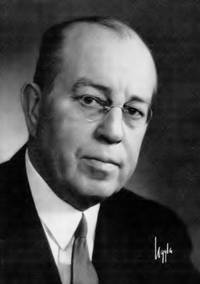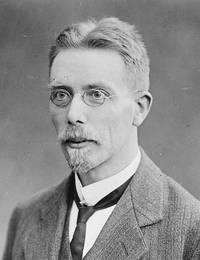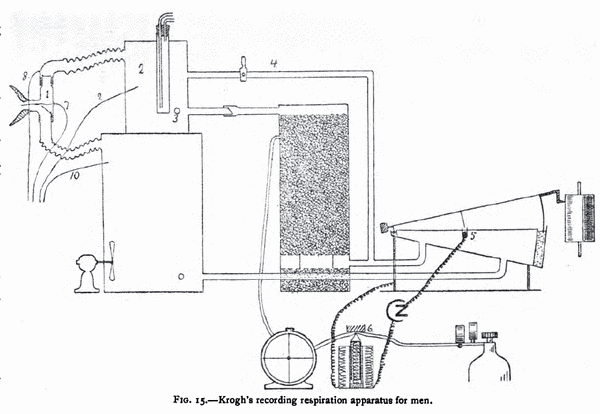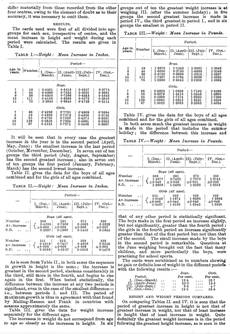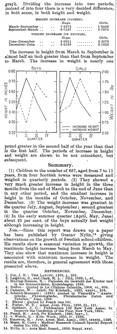The LANCET, February 22, 1930, Article on Gustav Nylin Research.
Research, transcription and comments by Jørgen Malling Christensen.
The Swedish physician, scientist and cardiologist, Dr Gustav Nylin, 1892-1961, was heavily influcenced by Rasmus Malling-Hansen’s medical research. Serving as a young doctor in a Stockholm suburb in the 1920s he was a school physician, responsible for the health care of thousands of school children in 10 schools. He took advantage of this opportunity to replicate Malling-Hansen’s research methods and achieved very similar results! This important research project became his doctoral thesis, successfully defended in 1929: “Periodical Variations in Growth, Standard Metabolism and Oxygen Capacity of the Blood in Children”. The main part of the thesis is found on our website.
A short article in THE LANCET Feb.22, 1930, page 420, brings Nylin’s work to the attention of the readers. The very last sentence of the article probably refers to Dr John Boyd Orr’s research in Scottish schools, the results of which were published the same year. Dr Orr – a noted Nobel Prize winner – was also a follower of Malling-Hansen’s research methods, aiming at replicating and testing his results.
THE GROWTH OF CHILDREN.
Dr. Gustav Nylin has lately published[1] some observations on the growth of groups of children during a year. His data include estimations of height and weight, the standard metabolism, and the oxygen capacity of the blood, and his material consisted of Swedish school-children of various ages during the years 1926-27 and 1928-29. The measurements of heights and weight were made with great accuracy under controlled conditions, the children being always examined at the same time of day so as to obviate error due to the normal daily variations. The basal metabolism was estimated by Krogh’s[2] apparatus[3]; the hæmoglobin was estimated at the same time, and the oxygen capacity of the blood was calculated indirectly from this. The results showed that in children of varying ages there is a periodicity of growth during the year, the height increase exhibiting two maxima, of which the larger is from March to May, and the smaller from November to January. The two minima are thus from September to November and from January to March. On the whole it was found that increase of weight varied inversely with increase of height, so that a maximal increase rise in height coincided with a minimal rise in weight. Besides this periodicity, weight and height in boys showed a periodicity which Nylin terms endogenous; he finds that periods of increased growth tend to be followed by corresponding periods of decrease. Standard metabolism for children round about the age of six years has a periodicity, closely connected with that of height increase, in that during such periods the metabolism rises. It was noted, in the case of one child who was very carefully studied, that a close connexion exists between height increase and metabolism, for both were found to be maximal at the same time of the year and this was when the sun radiation was also maximal. Corresponding variation in the oxygen capacity of the blood was also found in school-children of all ages, the minimum occurring during the dark period of the year and the maximum during the light. The latter, however, appeared several months later than the corresponding maximal and minimal metabolic variations. To test the theory that light is one of the cause of height increase, Nylin made some separate observations on a large group of children who were exposed to mercury-vapour lamps and found that such radiation appeared to stimulate growth in height. These results are of interest in view of the recent observations in England.
[1] Acta Med. Scand., 1929, Suppl. xxxi.
[2] JMC: Schack August Steenberg Krogh, 1874-1949, Danish professor at the Department of Zoophysiology, the University of Copenhagen from 1916-1945. He contributed a number of fundamental discoveries within several fields of physiology. Nobel Prize in 1920 in Physiology or Medicine for the discovery of the mechanism of regulation of the capillaries in skeletal muscle. Krogh was a constructor of scientific instruments of which several had considerable practical importance, e.g. the spirometer and the apparatus for measuring basal metabolic rate.
[3] JMC: Krogh’s Metabolism Apparatus was constructed for the measurement of oxygen consumption and was still being used in hospitals in the 1980s to measure metabolism.

